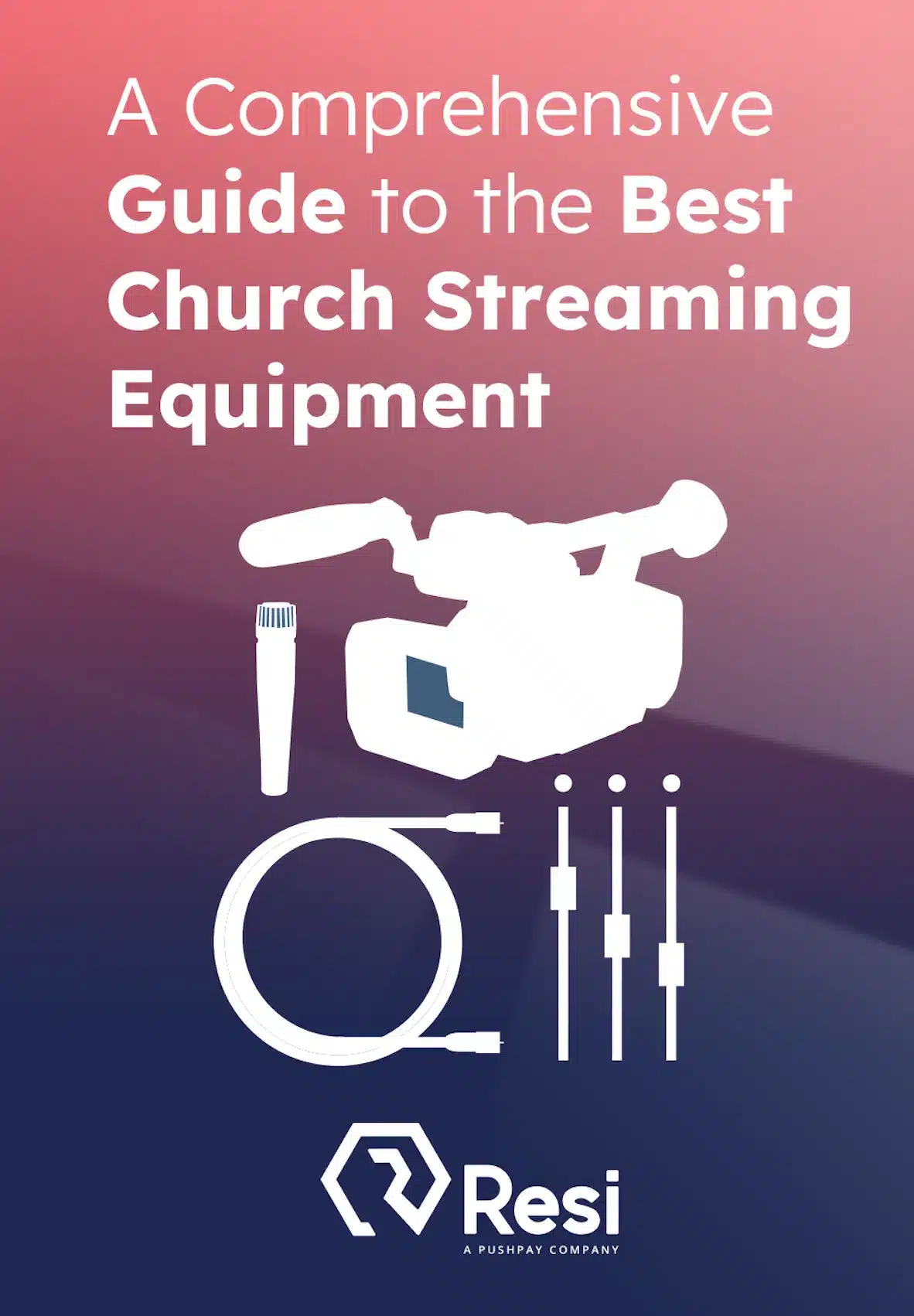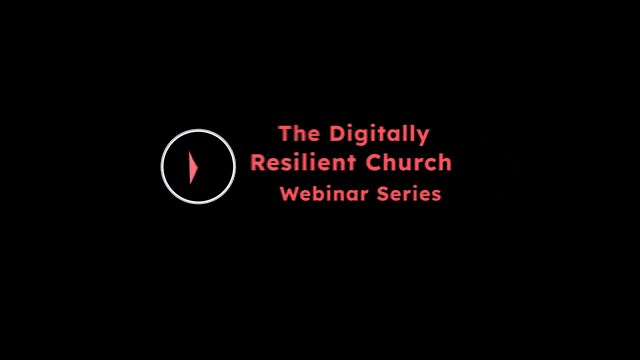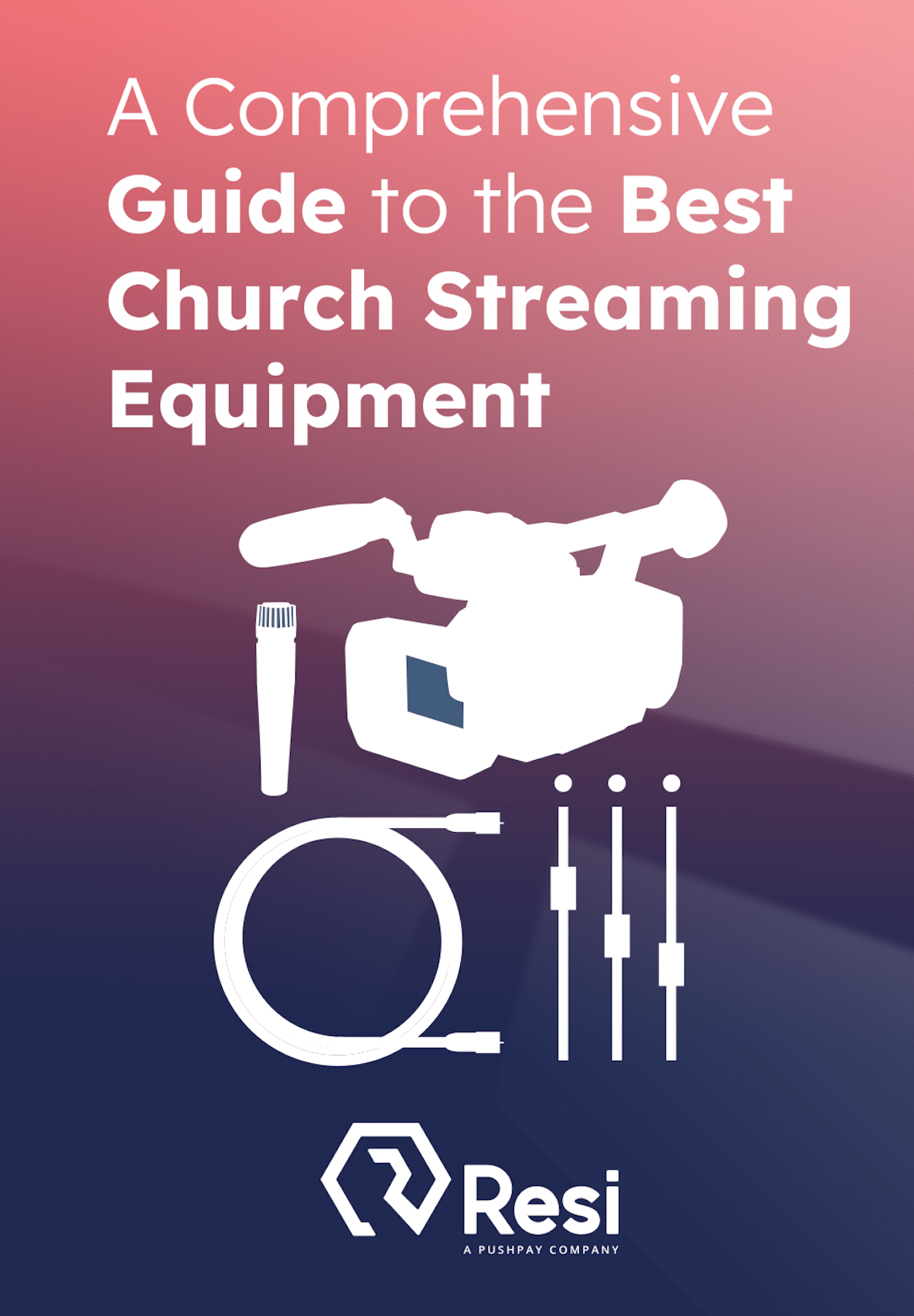
Whether it’s a church service, a corporate event, or a sports broadcast, video quality plays a huge role in keeping audiences engaged. No one wants to sit through a blurry, pixelated feed that feels like it was filmed on a flip phone from 2005.
Not too long ago, standard definition (SD) was the best we had. It was enough—until it wasn’t. As internet speeds improved and streaming platforms raised their quality standards, HD became the new baseline. Now, 4K is making its way into the conversation, pushing video resolution even further.
But let’s be real. Even with all this progress, some organizations still rely on SD for their live streams. Maybe it’s a bandwidth issue. Maybe it’s a budget concern. Whatever the reason, the question remains: is SD good enough? Or is it time to fully embrace HD (and beyond) for live streaming?
Spoiler alert: if you care about delivering a high-quality experience, HD wins every time.
Switching Streaming Providers
What if we told you that switching to Resi could be as easy as a few simple steps?
Download for free!
Understanding the differences between SD and HD streaming
What is SD (standard definition)?
Standard definition, or SD, was once the gold standard of video quality. It runs at a resolution of 480p (720×480 pixels), which, by today’s standards, looks soft and blurry—especially on modern screens. SD uses a lower bitrate, meaning it requires less bandwidth and storage space. This was great back when internet speeds were slower, and streaming infrastructure wasn’t as advanced.
But here’s the problem: SD hasn’t aged well. On larger screens, it looks stretched, grainy, and outdated. Streaming services and social media platforms have mostly moved on, prioritizing HD as the new minimum. While SD still has its place in low-bandwidth environments, it’s hard to argue that it delivers a satisfying viewing experience in 2025.
What is HD (high definition)?
High definition (HD) is a major leap forward in clarity, detail, and overall picture quality. At 720p (1280×720 pixels) and 1080p (1920×1080 pixels), HD produces a much sharper and more immersive image compared to SD. Viewers notice the difference immediately—text is crisper, colors are richer, and movement looks smoother.
The trade-off? HD requires more bandwidth. A 1080p stream demands a higher bitrate to maintain quality, but for most internet connections today, that’s not a dealbreaker. In fact, platforms like YouTube, Facebook, and streaming providers optimize their services to prioritize HD, making it the industry standard for live video.
Beyond HD: 4K and ultra HD streaming
If HD is good, 4K is on another level. With a resolution of 3840×2160 pixels, 4K provides incredible detail, making it ideal for professional broadcasts, gaming, and high-end live streaming. As more devices and streaming platforms support 4K, its adoption continues to grow.
That said, 4K isn’t practical for everyone—yet. It requires significantly more bandwidth, and not all viewers have the internet speed to handle it smoothly. But for organizations that want to future-proof their streaming setup and deliver the best possible quality, 4K is worth considering.
So where does that leave SD? In most cases, behind.
Why HD (or 4K) is the better choice for live streaming
Enhanced viewer experience
Quality matters. When a live stream looks crisp and detailed, people stick around. HD and 4K streams eliminate the pixelation and blurriness that make SD feel outdated. Whether it’s a worship service, a product launch, or a live concert, the difference is night and day.
Text and graphics also play a big role here. Lower-resolution streams often make on-screen text hard to read, especially on larger displays. In HD or 4K, every detail—lower thirds, song lyrics, speaker slides—remains sharp and easy to follow. That alone can be the difference between a frustrating viewing experience and an engaging one.
Better engagement & retention
The quality of your stream directly affects how long people watch. Studies show that poor video quality—constant buffering, low resolution, or compression artifacts—causes viewers to drop off quickly. When the picture is clear and fluid, engagement goes up.
Think about your own habits. If you’re watching a live event and the feed is grainy or keeps freezing, how long do you stick around? Now flip that: if a stream looks sharp and professional, it’s easier to stay invested. Whether you’re running an online church service or a virtual event, keeping your audience engaged starts with delivering a high-quality stream.
How to Livestream Your Virtual Events in 4 Easy Steps
Upgrade your live streaming platform and never lose a viewer—ever. Get your free guide today!
Download for free!
Professionalism & brand perception
First impressions matter, and video quality is a big part of that. A polished, high-definition stream signals professionalism. It tells your audience that your brand, church, or organization values quality and is serious about delivering a great experience.
On the other hand, streaming in SD can make content feel outdated. In a world where 1080p is the norm (and 4K is becoming more common), a grainy 480p stream stands out for all the wrong reasons. If you want your live stream to reflect excellence, upgrading to HD (at the very least) is a no-brainer.
Future-proofing your live stream
SD isn’t just lower quality—it’s fading into irrelevance. Many platforms, from YouTube to Facebook Live, are shifting toward higher resolutions. As streaming technology continues to advance, HD and 4K will become even more standard, leaving SD behind.
By making the move to HD or 4K now, you’re not just improving your stream for today—you’re setting it up for the future. As internet speeds and viewer expectations continue to rise, investing in high-quality streaming ensures your content remains relevant and competitive.
At the end of the day, choosing HD over SD isn’t just about better visuals—it’s about delivering an experience that keeps your audience engaged, enhances your brand, and prepares your content for what’s next.
Addressing concerns about HD & 4K streaming
Upgrading to HD or 4K is an easy decision when looking at quality and engagement, but some organizations hesitate due to concerns about bandwidth, storage, and cost. The good news? These challenges aren’t as big of a hurdle as they once were.
Bandwidth requirements & internet speeds
It’s true—streaming in HD or 4K requires a stronger internet connection than SD. But in 2025, broadband internet is widely available, and most viewers have the speeds to handle high-definition video without issue.
For those worried about fluctuating bandwidth, adaptive bitrate streaming solves the problem. Instead of forcing every viewer to load a massive 1080p or 4K stream, this technology automatically adjusts quality based on the viewer’s internet speed. That way, someone with a slower connection still gets a smooth experience without constant buffering, while those with fast internet enjoy full HD or 4K clarity.
Storage & processing power
Higher-resolution video files are larger, which means they take up more space. But storage isn’t the concern it used to be. Cloud-based solutions make it easy to store and manage high-quality video without investing in massive hard drives or local servers.
Processing power is another factor, especially for organizations running their streams on older hardware. However, modern streaming platforms—like Resi—are designed to optimize bandwidth efficiency without sacrificing quality. That means you can stream in HD or even 4K without overloading your system.
Cost considerations
A decade ago, HD and 4K streaming required expensive cameras, capture cards, and infrastructure. Today, high-quality streaming gear is more affordable than ever. Even budget-friendly webcams and smartphones shoot in 1080p, and 4K cameras have become accessible to churches, businesses, and content creators without massive budgets.
The real cost isn’t in upgrading—it’s in falling behind. Organizations that stick with SD risk delivering a subpar experience, which can lead to lower engagement and a perception that their content is outdated. Investing in HD now ensures your streams stay competitive and high quality for years to come.
At the end of the day, the barriers to HD and 4K streaming are shrinking. With better internet, more efficient streaming technology, and lower costs, there’s never been a better time to make the switch.
How to upgrade your live stream from SD to HD (or 4K)
Making the jump from SD to HD—or even 4K—doesn’t have to be complicated. With the right approach, you can elevate your stream’s quality without unnecessary headaches. Here’s how to get started.
Check your current setup
Before upgrading anything, take stock of what you’re working with. Is your camera capable of shooting in HD or 4K? Can your encoder handle higher resolutions? Is your internet speed fast enough to support a high-bitrate stream? These are key factors that will determine how smoothly you can transition to a higher-quality setup.
If your camera is locked at 480p, no amount of tweaking will magically produce an HD stream. Similarly, if your encoder or internet connection can’t handle the data load, your stream will suffer from buffering and lag. Identifying bottlenecks early will help you make smarter upgrades.
Upgrade essential hardware
If your current equipment is outdated, it’s time for an upgrade. Investing in an HD or 4K camera is the first step—luckily, options at every price point make this an easier decision than ever. Even a mid-range camera or a high-quality webcam can significantly improve your stream’s look compared to an older SD setup.
Lighting is another factor that often gets overlooked. A great camera can only do so much if the scene is poorly lit. Proper lighting makes a massive difference in how professional and polished your stream appears.
Finally, a strong internet connection is crucial. If you’re streaming in 1080p or 4K, a wired Ethernet connection is the best choice to prevent dropouts and lag. If Wi-Fi is your only option, make sure your network is stable and fast enough to handle the bitrate requirements.
Best Livestreaming Equipment
Discover what top-rated equipment we recommend adding to your church streaming toolkit.
Download for free!
Optimize your streaming platform
The right hardware is only part of the equation—your streaming platform also plays a huge role in video quality. A platform like Resi ensures that your stream remains high-quality and resilient, even if your internet connection isn’t perfect. With built-in redundancy and adaptive bitrate streaming, Resi keeps your live video looking smooth, sharp, and free from interruptions.
Conclusion
SD had its moment, but that moment has passed. As streaming technology continues to evolve, sticking with lower-resolution video is no longer a viable option for organizations that care about engagement, professionalism, and long-term relevance.
Upgrading to HD—or even 4K—improves viewer experience, strengthens brand perception, and future-proofs your content as streaming platforms continue pushing for higher quality. Whether you’re a church, business, or content creator, investing in a better streaming setup now will pay off in the long run.
If you’re ready to take your live stream to the next level, Resi makes it easy. Explore how our platform delivers high-quality, resilient live streaming that keeps your audience engaged—without the headaches.







